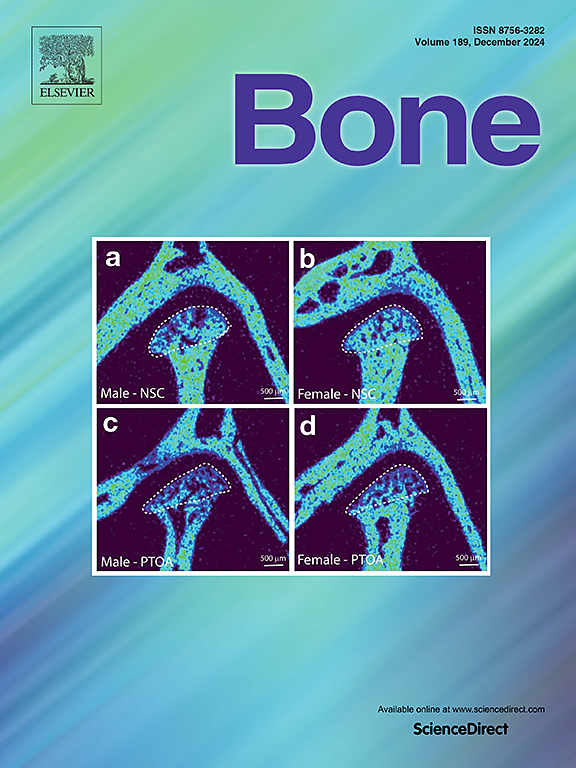Effect of acute performance fatigue on tibial bone strain during basketball maneuvers
IF 3.5
2区 医学
Q2 ENDOCRINOLOGY & METABOLISM
引用次数: 0
Abstract
The tibia is one of the most common sites for bone stress injury (BSI) in active individuals. BSIs are thought to occur in response to damage accumulation from repetitive loading below the tissue's yield limit. The effect of fatigue on musculoskeletal biomechanics and tibial bone strain during athletic movements remains unclear. In this study, participant-specific finite element (FE) and musculoskeletal models in 10 collegiate-basketball players were used to analyze the effect of acute performance fatigue on joint kinematics and torques, ground reaction forces (GRFs), and the magnitude and distribution of tibial bone strains during select basketball maneuvers. Participants were fatigued by performing repeated exercises wearing a weighted vest until their vertical jump height decreased by 20 %. Fatigue reduced the vertical GRF during midstance of a jump task, and lowered hip and knee peak extension torques and ankle plantarflexion. However, fatigue had limited impact on tibial bone strain magnitude and distribution during jumping. In contrast, there was a shift in peak strain timing following fatigue during a lateral cut task and reduced strain at various times of stance during sprinting. The results suggest that fatigue was induced and, if anything, reduced tibial bone strain. As increased bone strain is thought to be associated with increased BSI risk, the reduced strain observed in the current study suggests that fatigue may actually be partly protective, possibly as a result of reduced muscle activation and force production.
篮球运动中急性运动疲劳对胫骨劳损的影响。
胫骨是运动个体中最常见的骨应激性损伤(BSI)部位之一。bsi被认为是对低于组织屈服极限的重复负荷造成的损伤积累的反应。在运动过程中,疲劳对肌肉骨骼生物力学和胫骨应变的影响尚不清楚。本研究采用10名大学生篮球运动员的有限元和肌肉骨骼模型,分析了急性运动疲劳对篮球运动中关节运动学和扭矩、地面反作用力(GRFs)以及胫骨应变的大小和分布的影响。参与者穿着加重背心进行重复练习,直到他们的垂直跳跃高度下降20% %。在跳跃任务中,疲劳降低了垂直GRF,降低了髋关节和膝关节的峰值伸直力矩和踝关节屈曲。而疲劳对跳跃过程中胫骨应变大小和分布的影响有限。相比之下,在横向切割任务中疲劳后的峰值应变时间发生了变化,在短跑过程中不同时间的姿态下应变减少。结果表明,疲劳是诱导的,如果有的话,减少胫骨应变。由于骨张力的增加被认为与BSI风险的增加有关,目前研究中观察到的张力的减少表明疲劳实际上可能在一定程度上具有保护作用,可能是由于肌肉激活和力量产生减少的结果。
本文章由计算机程序翻译,如有差异,请以英文原文为准。
求助全文
约1分钟内获得全文
求助全文
来源期刊

Bone
医学-内分泌学与代谢
CiteScore
8.90
自引率
4.90%
发文量
264
审稿时长
30 days
期刊介绍:
BONE is an interdisciplinary forum for the rapid publication of original articles and reviews on basic, translational, and clinical aspects of bone and mineral metabolism. The Journal also encourages submissions related to interactions of bone with other organ systems, including cartilage, endocrine, muscle, fat, neural, vascular, gastrointestinal, hematopoietic, and immune systems. Particular attention is placed on the application of experimental studies to clinical practice.
 求助内容:
求助内容: 应助结果提醒方式:
应助结果提醒方式:


